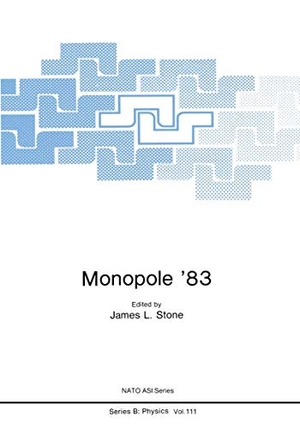Für statistische Zwecke und um bestmögliche Funktionalität zu bieten, speichert diese Website Cookies auf Ihrem Gerät. Das Speichern von Cookies kann in den Browser-Einstellungen deaktiviert werden. Wenn Sie die Website weiter nutzen, stimmen Sie der Verwendung von Cookies zu.
Cookie akzeptieren
James L. Stone
Monopole ¿83
- Springer US
- 2012
- Taschenbuch
- 716 Seiten
- ISBN 9781475703771
Ten years have passed since It Hooft and Polyakov demonstrat ed that superheavy magnetic monopoles were a natural consequence of any Grand Unified Theory (GUT) in which the unifying group contains a U(l) factor as a subgroup. An analysis of these GUTs in an expanding, cooling universe yields a phase transition at an energy ~l015 GeV and at a cosmic time ~lO-35 seconds after the big bang. The general consequences of GUTs and this phase transition are the prediction of proton decay, the production of superheavy magnetic monopoles, and an understanding of the observed excess of matter over anti- matter in the universe. Attempts to provide
Mehr
Weniger
zzgl. Versand
in Kürze